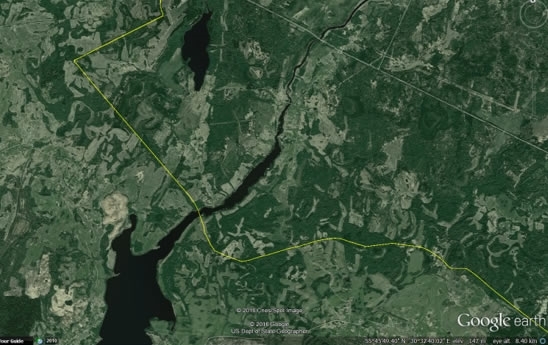By Chris Heward, Wetlands Research Assistant
Of the seventeen woodcock that are currently returning data we have: six Russians, three Swedes, two Finns, a Norwegian, a Dane and four birds that have decided to remain in the UK.
One of the Russians, however, seems to be a little undecided upon his nationality. Nellie II has chosen to spend the spring right on the border with Belarus and appears to have hopped back and forth across it a couple of times already.
What makes this especially interesting is that Nellie II is not the only bird to have migrated to this region. In previous years, Woodcock Watch has tracked other individuals back to woodlands on or near this border.
 Map showing a typical mix of woodland, grassland and lakes surrounding the border between Russia and Belarus (marked in yellow).
Map showing a typical mix of woodland, grassland and lakes surrounding the border between Russia and Belarus (marked in yellow).
A woodcock named Busy, who was tagged in Cornwall in the first year of the study, visited a very similar area. Roughly similar sites were also used by Rebecca, Amy and Rocky, and a little further north, Remy spent the summer of 2014 on the tripoint of Latvia, Estonia and Russia’s borders.
This broad area west of Moscow, south of St. Petersburg and North of Ukraine must comprise particularly favourable breeding habitat for woodcock. The aerial picture provided by Google Maps would certainly support this, showing a landscape dominated by large tracts of woodland.
Closer inspection shows that much of this wood is broken by natural clearings of rough grassland and lakes; what more could a woodcock want?